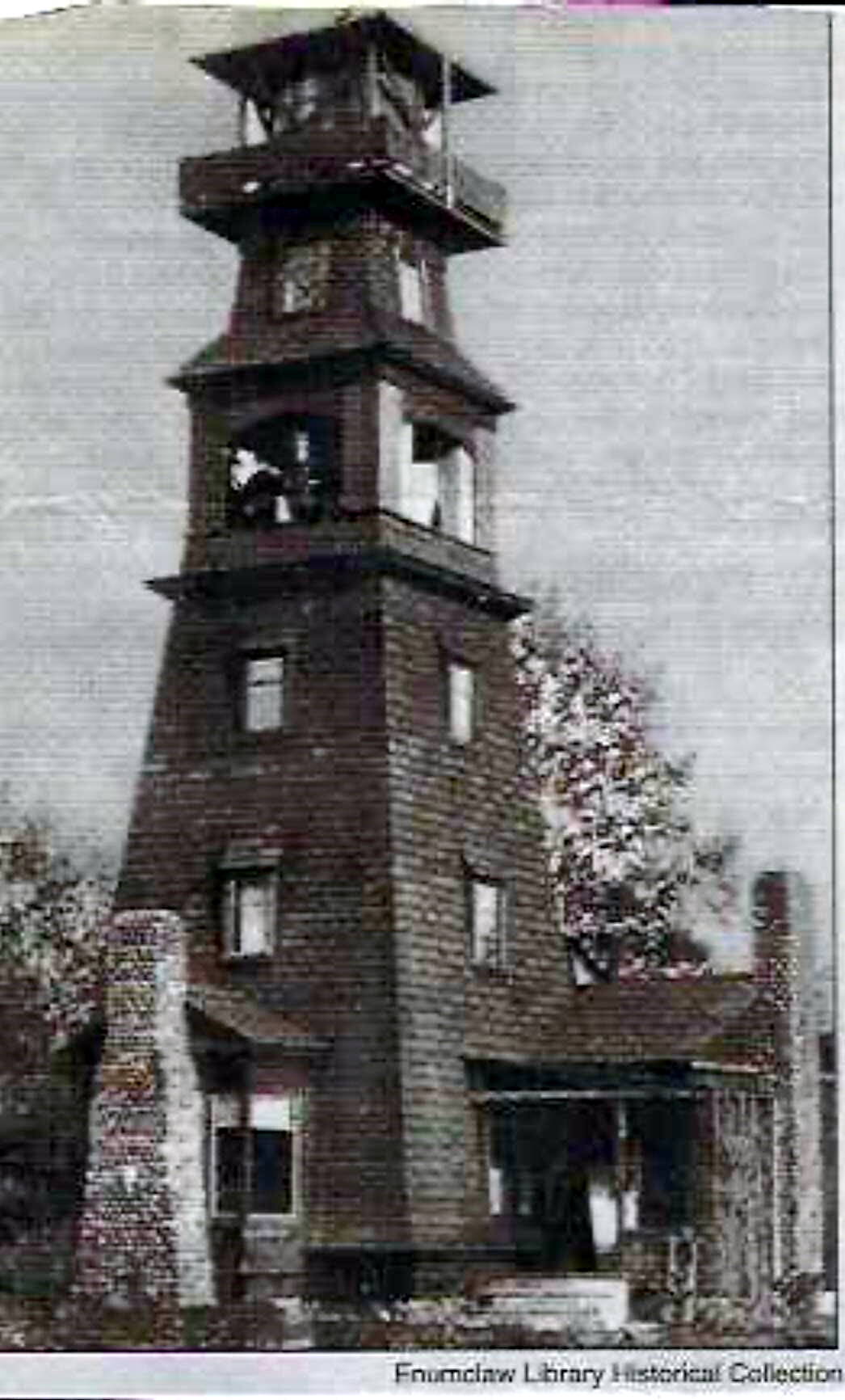When you travel toward Buckley on 244th Avenue S.E., before you come to State Route 410, you pass where one of the first the pioneer communities used to be. It was called Boise Creek.
The town of Boise Creek was founded by George Vanderbeck. His wife and child came later from Chicago. They were the first white family to settle on the Plateau.
Vanderbeck came to the Plateau with another early pioneer, Johannes Mahler in 1870. Mahler Park was donated by Mahler and is just east of where the Mount Rainier Christian Center now sits. According to the “The Pioneer History of Enumclaw” [1941], “Mr. Mahler came with $100, Mr. Vanderbeck with $1,000.” Vanderbeck’s wealth allowed him to have great ambitions for his property.
According to John Anderson’s 2/21/2013 Patch article “Early Enumclaw’s Neighbors”, Vanderbeck’s “land claim extended to where the Enumclaw High School now sits and near where an Indian longhouse was located then.”
Vanderbeck platted part of his property into a town, and established a post office. In its heyday, “Boise Creek boasted a school, two general stores, a hotel, a sawmill, a shingle mill, and a saloon” (Anderson). The town was called a “flag station”. This meant that trains would stop there if the flagman raised his flag, otherwise the train would continue on.
James Johnson and his wife and five of his twelve children emigrated from Canada to Boise Creek via Seattle in 1880. A dam was soon built to power a grist mill to grind wheat for flour. He also made money with a “ferry” that crossed the pre-Mud Mountain Dam White River. The ferry was really just a small rowboat that followed a cable across the river. The crossing was very dangerous, taking the lives of several pioneers, including four mailmen, and several horses who had to swim across the river but drowned in the rain-swollen waters.
Eventually, the community got a wooden bridge across the White River, rendering the dangerous boat ferry out of date. That bridge was washed out in the flood of 1906. A new wooden bridge was built to replace it, but washed out in 1911. Then a steel bridge was built, which was also destroyed by the raging waters of the White River. A new bridge was built in 1950, which is the one we cross today. There was at least one other bridge built between 1911 and 1950. Old photos show it to be to the east of the wooden railroad trestle. The concrete pillars for that bridge are still there.
Boise Creek also sported a colorful character by the name of E.L. Robinson. He and his wife created a utopian community there which eventually failed. Robinson also built a six-story water tower with an observation room on the fifth floor and a balcony on the fourth, with living quarters on the first three levels. It was built where Boise Creek and the White River converge. Reports by several visitors noted that the site was beautiful. Turn off of SR 410 onto Mud Mountain Road. Pull off at a turn off about 50 yards from 410. You can walk to the White River along Boise Creek.
Eventually, a wooden trestle was built over the White River that was torn down in the 1980s or 1990s. I remember crossing underneath it when I worked at Sumner High School and lived near Mud Mountain Road.
The Buckley Banner described a train wreck near Robinson’s tower home. “A car containing forty-five barrels of wine of different kinds [and pigs] was almost completely telescoped by the tender of the eastbound train, and the wine flowed in streams in every direction.” Bystanders from both sides of the White River collected the flowing wine with any container they could find. The freed pigs lapped up the wine and got drunk along with the bystanders who came to observe the train wreck and farmers who came to retrieve the pigs. It must have been a sight for Robinson and his family to watch and perhaps indulge in.
The town of Boise Creek is no more. All that remains of Boise Creeks is the old Shell gas station that is now called the Boise Creek Grocery. The official name of the baseball fields called “the Six-Plex” is the Boise Creek Park, just to the north of the pioneer community.
In the competition for whether Enumclaw or Boise Creek would become the dominant town, Frank and Mary Stevenson won out by donating land to the Northern Pacific to build a railroad right-of-way.
The Stevenson’s generosity and social intelligence caused another potential town to disappear into history, while Enumclaw remains.


